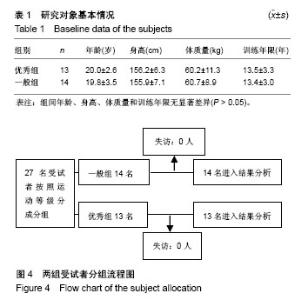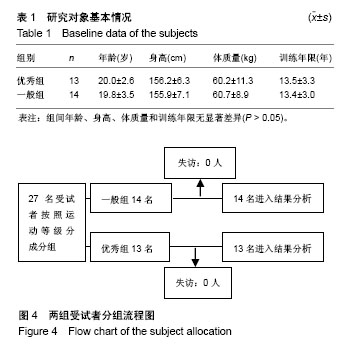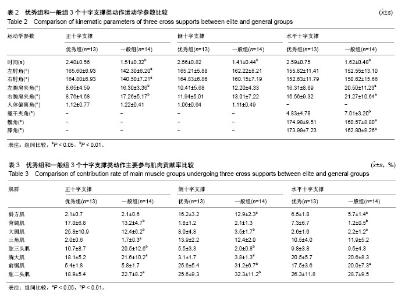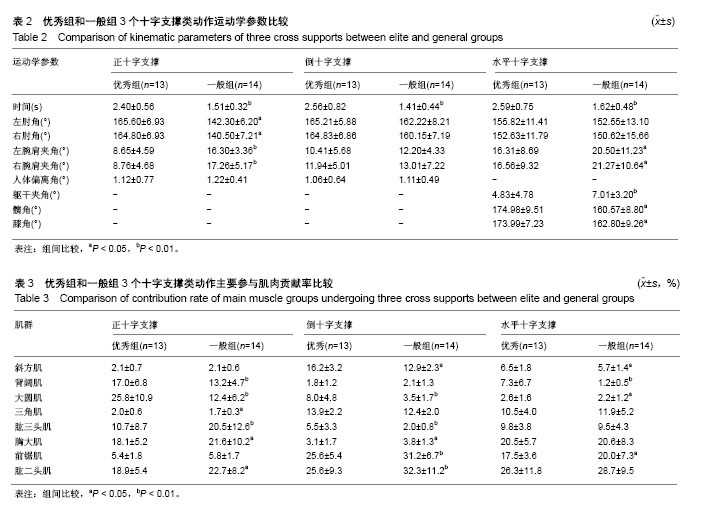| [1] 周曰智, 邵斌. 2013-2015年世界体操优秀运动员吊环动作发展动态分析[J].山东体育学院学报,2016, 32(3):73-78.[2] 乔福峰.26-29届奥运周期男子体操规则变化与体操技术发展研究[D].北京:北京体育大学,2016.[3] 何俊.里约奥运会中国体操队失利分析及备战东京奥运会对策[J].体育科学, 2017, 37(4):87-96.[4] 吴翔.第45届世界体操锦标赛男子吊环成套动作的研究[J].南京体育学院学报(自然科学版),2016, 15(4):83-87.[5] 李思民,于涛.第38届世界体操锦标赛男子吊环成套动作编排特点与趋势研究[J].天津体育学院学报,2006, 21(4):299-302.[6] 宋倩,彭莉,秦渝珂,等.基于步态周期下跨栏运动员步态及下肢表面肌电特征分析[J].中国组织工程研究, 2017, 21(24): 3851-3857.[7] 张肃, 高峰. 膝关节最大和次最大等速运动至疲劳过程中主动肌与拮抗肌肌电特征分析[J].中国组织工程研究,2015,19(33): 5344-5350.[8] 邹静.李文寿.吊环十字支撑动作的力学和肌电研究[J].中国体育科技,1999,35(9):36-39.[9] 苏阳.吊环慢用力动作肌肉用力特点研究[D]. 南京:南京体育学院, 2013.[10] Carrara P,Exell T,Serrão J,et al.Asymmetry analysis of cross on gymnastics rings[C].The International Conference on Biomechanics in Sports.2015.[11] Dallas G,Mavidis A,Chairopoulou C.Influence of angle of view on judges’ evaluations of inverted cross in men’s rings. Percept Mot Skills. 2011 Feb;112(1):1091-1021.[12] Bernasconi SM,Tordi NR,Parratte BM,et al.Can shoulder muscle coordination during the support scale at ring height be replicated during training exercises in gymnastics. J Strength Cond Res. 2009;23(8):2381-2388.[13] 程亮.邹凯单杠并腿马凯洛夫动作的运动学分析[J].山东体育学院学报,2014,30(3):87-91.[14] 程亮,常书婉.邹凯单杠中穿上转体360°经反握倒立动作的运动学分析[J].南京体育学院学报(自然科学版), 2012,11(4):23-26.[15] Eskes M,van Alphen MJ,Smeele LE,et al.Predicting 3D lip movement using facial sEMG: a first step towards estimating functional and aesthetic outcome of oral cancer surgery.Med Biol Eng Comput.2017;55(4):573-583.[16] Gorostiaga EM,González-Izal M,Malanda A,et al.Blood lactate and sEMG at different knee angles during fatiguing leg press exercise.Eur J Appl Physiol. 2012;112(4):1349-1358.[17] 张丹. 陈一冰吊环以力量静止姿势结尾动作的运动学分析[D]. 成都:成都体育学院, 2013. |



